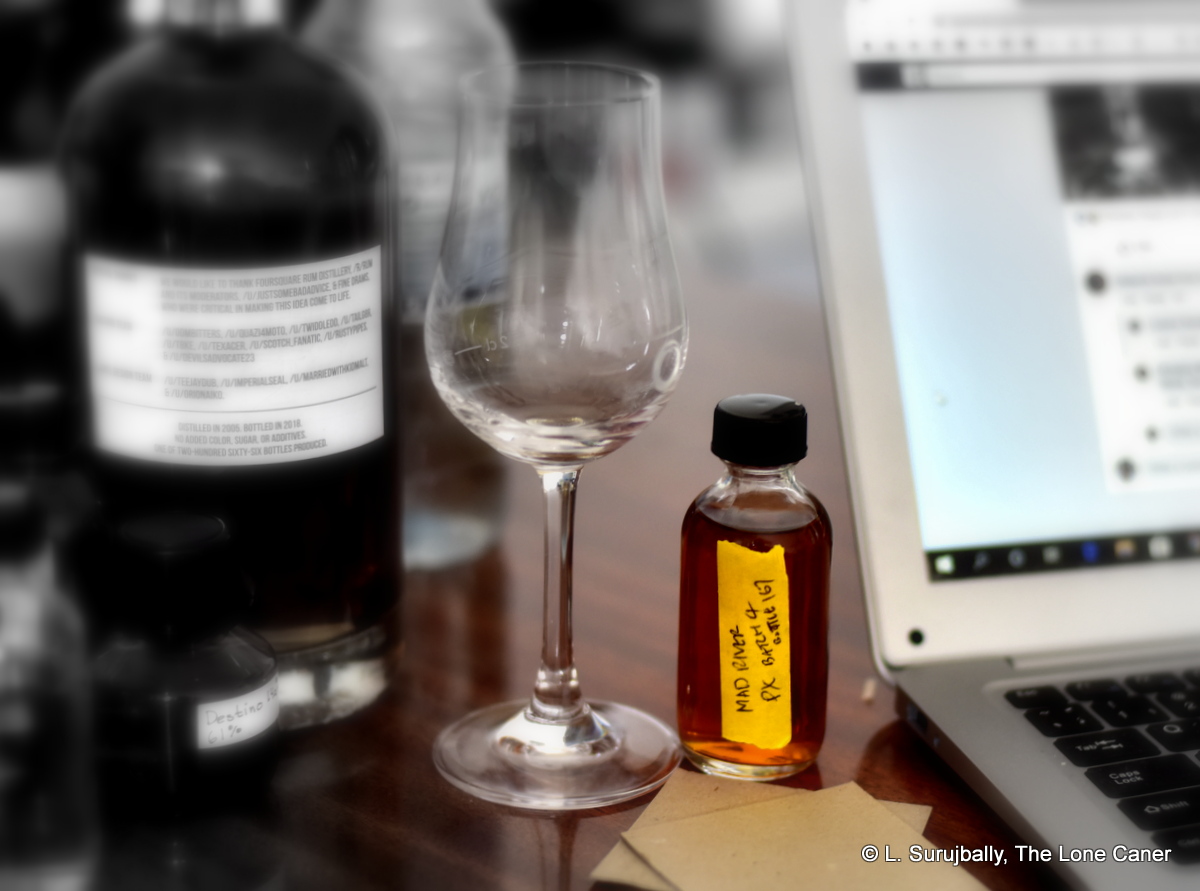
It must be something intrinsic to the USA and their commercial distilling culture, that almost every distillery I’ve come across seems to like making ten different thing off their apparatus. It’s as if they view a single point of focus, a single product line, as an anathema – a still must be multipurpose, and work to earn its keep by wringing the maximum different amount of spirits out of it. And this leads to my oft-repeated remark that American distillers seem to like making whiskies, gins, vodkas and other stuff — and produce rum not because of real love for the spirit but as a sort of afterthought to round out the portfolio and provide some immediate cash flow while their hoped-for next Pappy is ageing.
Mad River out of Vermont is no exception to this. In fact, while originally thinking of starting a winery, they finally settled on getting a distillation setup to produce what they really wanted to make – a brandy. Yet, oddly, after sourcing their Muller still from Germany, the first thing off that still in 2013 was a rum, the First Run, and went on from there to make bourbon, rye, and other types of rum — including a silver American “Demerara” (so named probably because it’s made from Demerara sugar, and I have a feeling there’s a potential trademark violation accusation there somewhere if DDL ever hears about it)…and, of course, apple brandy.
The PX is one of their stable of rums, which also includes a Maple-Cask aged rum, the aforementioned First Run and a flavoured vanilla variant. The PX is a single-column-still distillate, aged in toasted and charred barrels, finished in Pedro Ximinez casks (not idea how long in any of these) and released at 46% ABV.
These bare bones facts obscure a multitude of small issues. For one, they call it a “Demerara-based” rum and remark that the sugar they source is fair-trade certified, but what that means is that it’s a rum made with brown sugar of unstated provenance – if it came from Guyana, which is the only country which can sell a sugar with the word “Demerara” on it, “fair trade” would be an unnecessary statement. For me then, this rum skirts right on the edge of my personal belief idea that a rum should state its origins clearly, and should come from fresh-pressed juice, or molasses…not from sugar itself. The ageing is also never spelled out on the bottle or the website – not the ageing of the base rum, nor the duration of the finishing in PX. We have no idea what the complete outturn is, therefore grading the words “Limited Edition” is impossible. And so these niggling omissions in turn cast doubts (mine) on the “scrappy independent,” “we love what we do” origin story on their website, which I’ve learned the hard way to always regard with some skepticism.
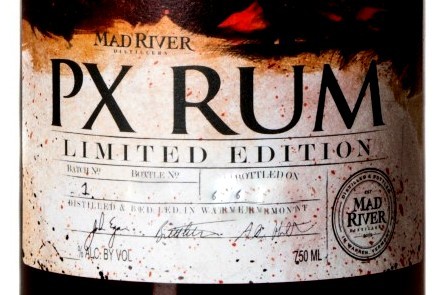
But enough. Let’s move on to the rum itself and what it tastes like, grade it on how it actually is. Is this a rum that’s up and coming, preparing to take its place as one of the USA’s unsung heroes, a nimble fast-moving upstart ready to take on all comers and make the Caribbean producers look anxiously to their nethers?
Not quite…though it is interesting. It starts off on the nose with woodchips, sawdust, glue, and old books in a musty library. The fruits start in the background and then slowly gather strength – these are sweet prunes and ripe peaches for the most part, leavened with vanilla, blancmange, some nuttiness and cereals, figs, cloves and raw damp tobacco leaves. The odd thing about it is that it starts nicely but fades away really quickly, so its evanescence is a disappointment — just as I’m coming to grips with it, it vanishes like it’s middle name is Cheshire.
The palate is also somewhat disappointing. The initial tastes are all there – dark fruits, raisins, prunes — but they’re thin and green, not really very precise or dialled-in, more like a mishmash of poorly coordinated soft stuff thrown at a wall. There’s also coffee grounds, tobacco and dark bitter chocolate, more cloves, and in this respect it reminds me a lot of the Dictador 20 or their Best of 1977 – except that it seems lighter, and drier, not quite as polished. As for the finish, that’s simply underwhelming — short and indeterminate, almost indifferent. There’s some tobacco, pancake syrup, vague fruits, smoke, maple sugar, all wispy and vague, here one second and gone the next.
The PX influence is noticeable in the fruitiness, nuttiness and some of the drier aspects of the rum — beyond that, I can’t say there’s much to enthuse. The nose is clearly the best part of the experience, yet even with that, it’s not the sort of rum that encourages sedate evening sipping while watching the sun go down and discussing the nature of the rumiverse. Part of that is the way the balance feels off, and the tastes and aromas don’t really pop, or mesh particularly well. You’re left feeling this is an essay in the craft, with a few interesting flavours that ultimately fail to cohere, leaving a muddled experience you don’t know what to do with when it’s done. Hardly enough for an unqualified recommendation.
(#705)(76/100)
Other Notes:
Opinion
My point about the jumping all over the spirits-production map, making various different spirits and not settling on one, is merely an observation, not a criticism; and not meant to diss a self-evident enthusiasm for the work, or the commercial realities all such little businesses in the USA must overcome. After all, the Caribbean rum producers are single-mindedly focused on rums because they started form a base of sugar and molasses which were produced right there, and moved on from that point. American distillers mostly lack this geographic-agricultural advantage. Too, being a single-product producer carries risk: money is tied up in this thing and if sales lag, the enterprise could founder – so the incentive to spread that risk by making several products which can all sell to different market segments, is great. But what it also does is diversify expertise – and the long, tedious, kaizen-like approach to learning and experimentation and gradual increase in knowledge and skill and quality of the one product they’ve hung their hat on – the way, for example, Mhoba’s founder tinkered for ages to get his stuff right – is missing.
That’s very likely why I have, so far, not seen much in the American rum industry to enthuse me. The rums most make are competent and occasionally interesting, yet don’t wow my socks off (at least, not yet). My experience thus far has been that those who go the whole hog and deal with rum as their primary spirit — not as some kind of adjunct — tend to do better qualitatively than those who try to do too much. Privateer is one such, Montanya is another, Richland and Pritchards are always intriguing, and there are more. But I have a feeling that if the Law of Mediocrity holds true, then the low to middling quality of all those American rums that have crossed my path over the last ten years (mostly by pure happenstance) define the majority of rums made there; and the companies I have named with products that really make a splash, are the outliers, the leading edges of the bell curve. Only time will tell if that feeling is accurate.
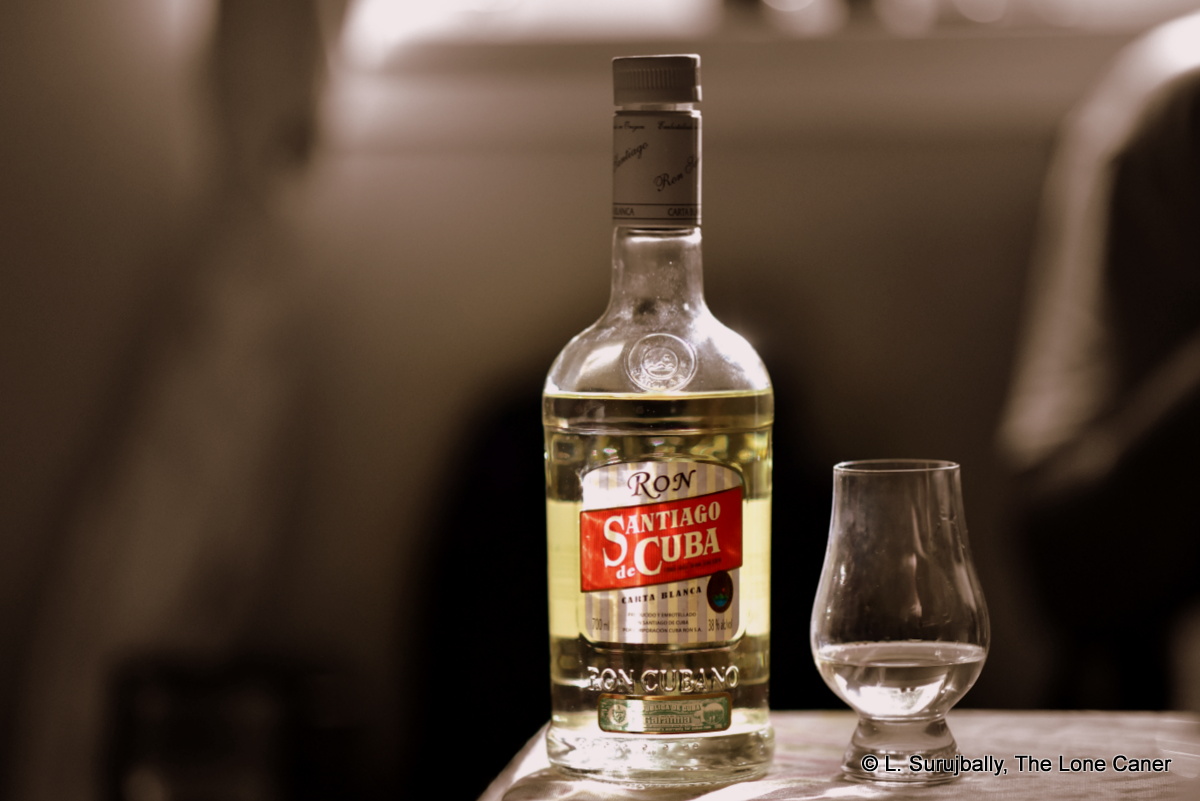
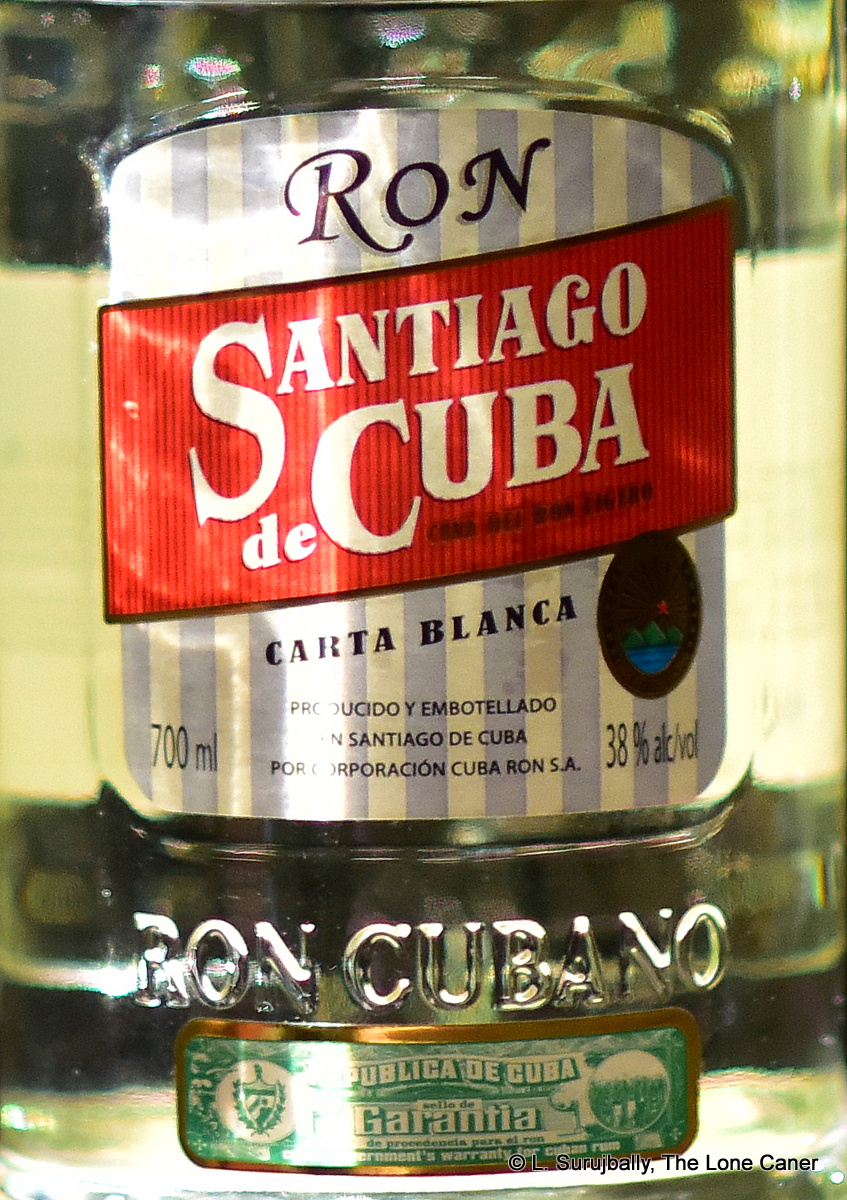 As for the taste when sipped, “uninspiring” might be the kindest word to apply. It’s so light as to be nonexistent, and just seemed so…timid. Watery and weak, shivering on the palate with a sort of tremulous nervousness, flitting here and there as if ready to flee at a moment’s notice, barely brushing the taste buds before anxiously darting back out of reach and out of range. I suppose, if you pay attention, you can detect some interesting notes: a sort of minerally base, a touch of mint. Citrus – like lemon grass – cardamom and cumin, and even some ginnip and sour cream. It’s just too faint and insipid to enthuse, and closes the show off with a final touch of citrus peel and lemon meringue pie, a bit of very delicate florals and maybe a bit of pear juice. Beyond that, not much going on. One could fall asleep over it with no issues, and miss nothing.
As for the taste when sipped, “uninspiring” might be the kindest word to apply. It’s so light as to be nonexistent, and just seemed so…timid. Watery and weak, shivering on the palate with a sort of tremulous nervousness, flitting here and there as if ready to flee at a moment’s notice, barely brushing the taste buds before anxiously darting back out of reach and out of range. I suppose, if you pay attention, you can detect some interesting notes: a sort of minerally base, a touch of mint. Citrus – like lemon grass – cardamom and cumin, and even some ginnip and sour cream. It’s just too faint and insipid to enthuse, and closes the show off with a final touch of citrus peel and lemon meringue pie, a bit of very delicate florals and maybe a bit of pear juice. Beyond that, not much going on. One could fall asleep over it with no issues, and miss nothing.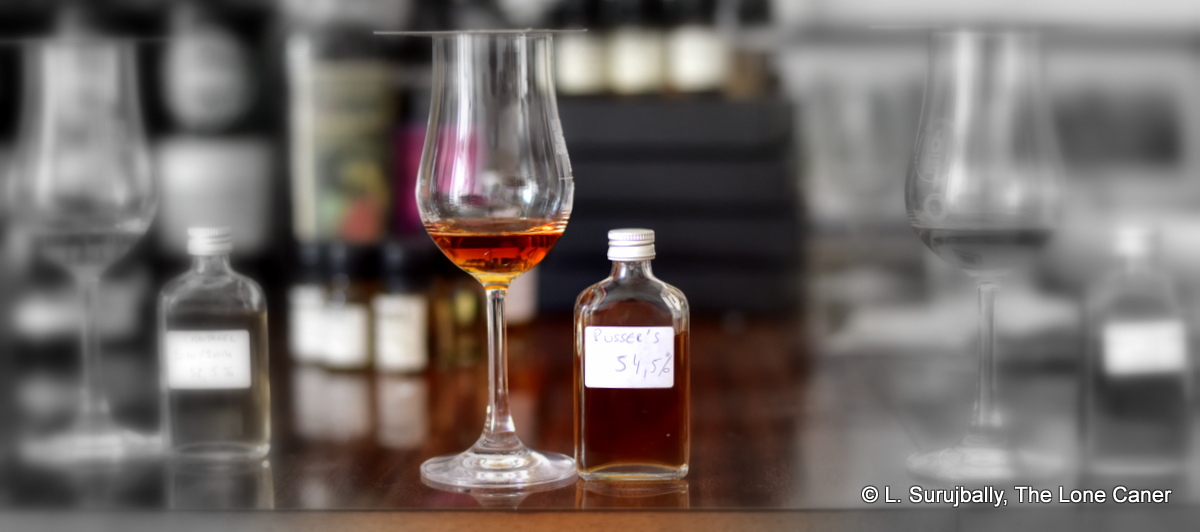
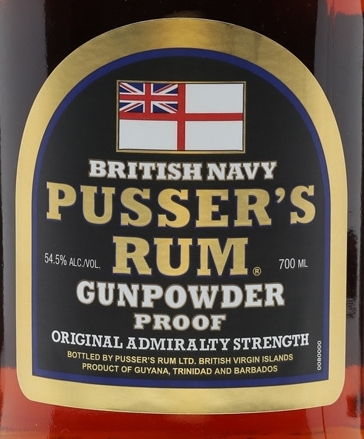 That provided, let’s get right into it then, nose forward. It’s warm but indistinct, which is to say, it’s a blended melange of several things — molasses, coffee (like
That provided, let’s get right into it then, nose forward. It’s warm but indistinct, which is to say, it’s a blended melange of several things — molasses, coffee (like 
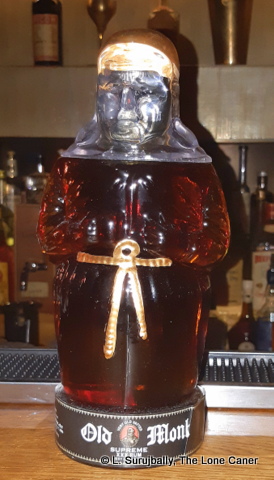 The Old Monk series of rums, perhaps among the best known to the Western world of those hailing from India, excites a raft of passionate posts whenever it comes up for mention, ranging from enthusiastic fanboy positivity, to disdain spread equally between its lack of disclosure about provenance and make, and the rather unique taste. Neither really holds water, but it is emblematic of both the unstinting praise of adherents who “just like rum” without thinking further, and those who take no cognizance of cultures other than their own and the different tastes that attend to them.
The Old Monk series of rums, perhaps among the best known to the Western world of those hailing from India, excites a raft of passionate posts whenever it comes up for mention, ranging from enthusiastic fanboy positivity, to disdain spread equally between its lack of disclosure about provenance and make, and the rather unique taste. Neither really holds water, but it is emblematic of both the unstinting praise of adherents who “just like rum” without thinking further, and those who take no cognizance of cultures other than their own and the different tastes that attend to them.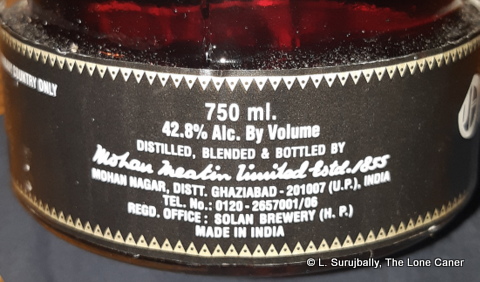
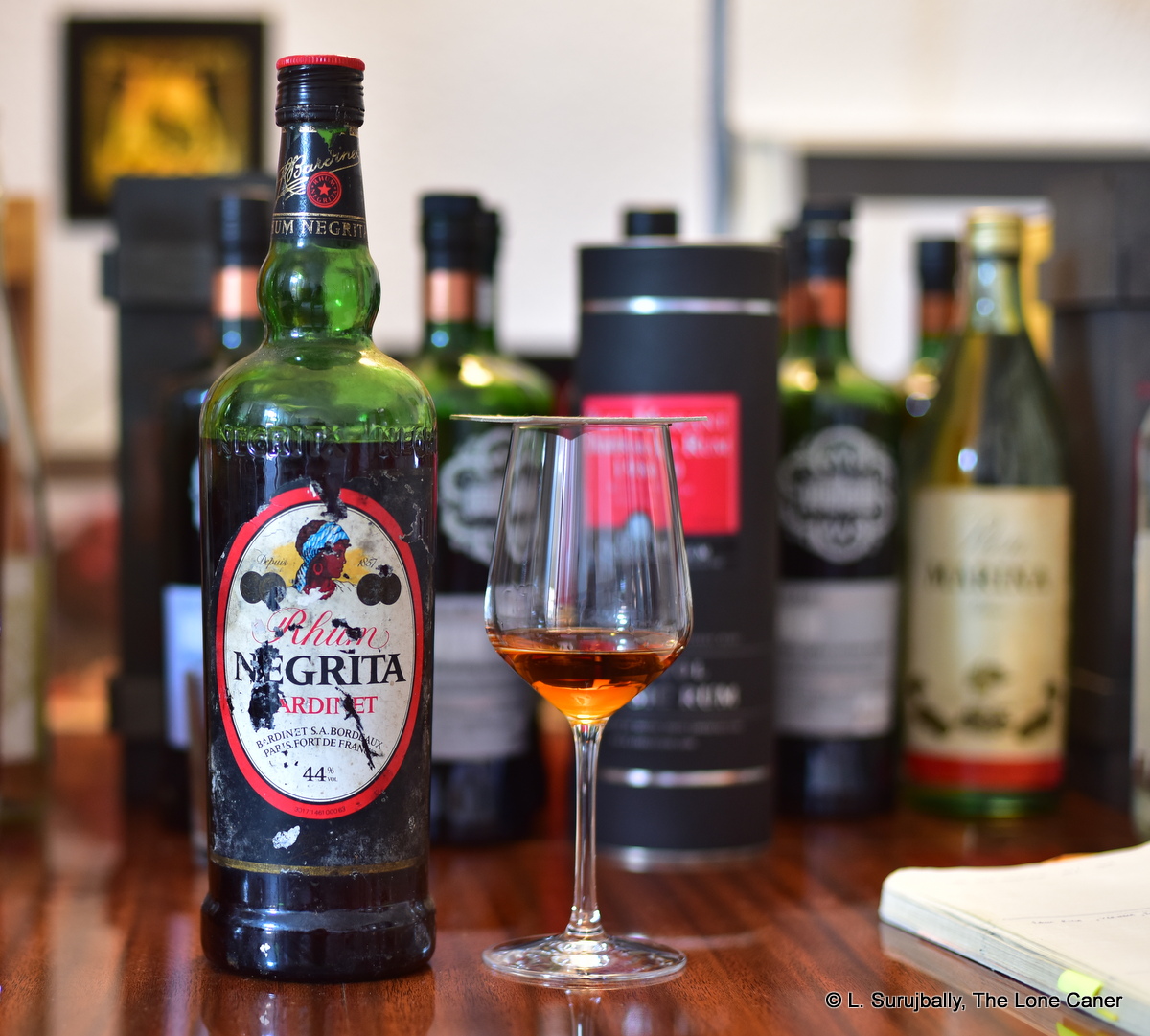
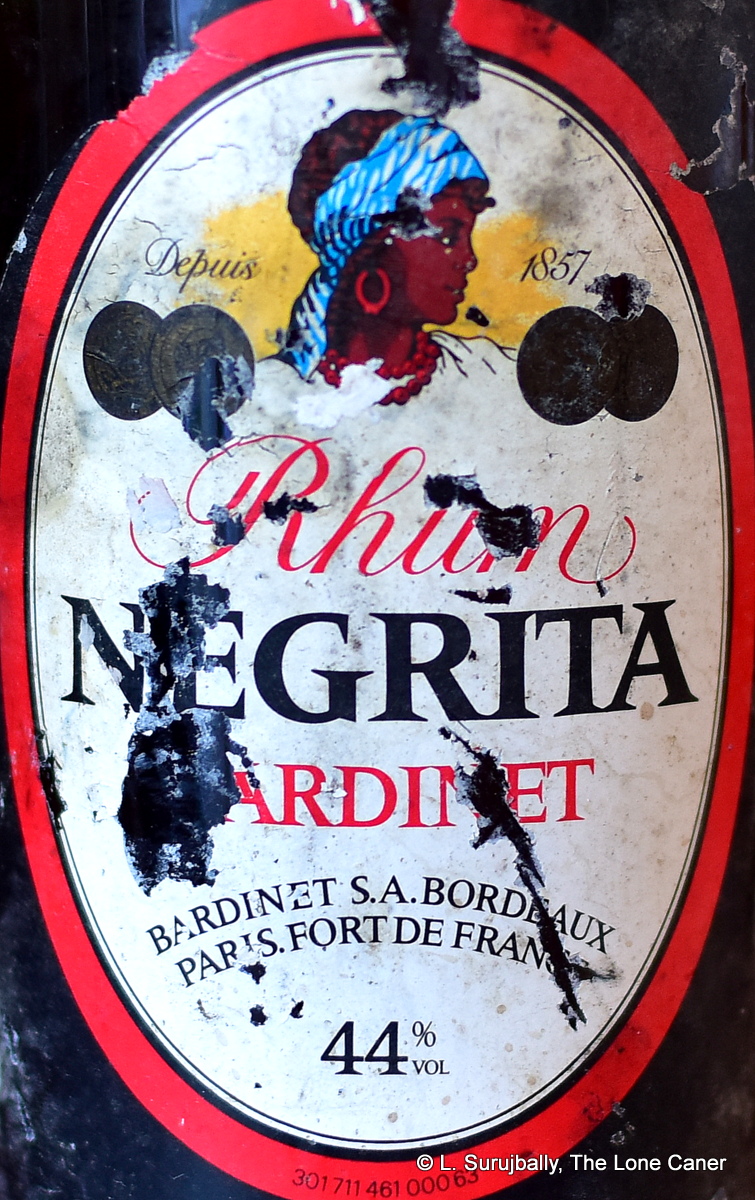
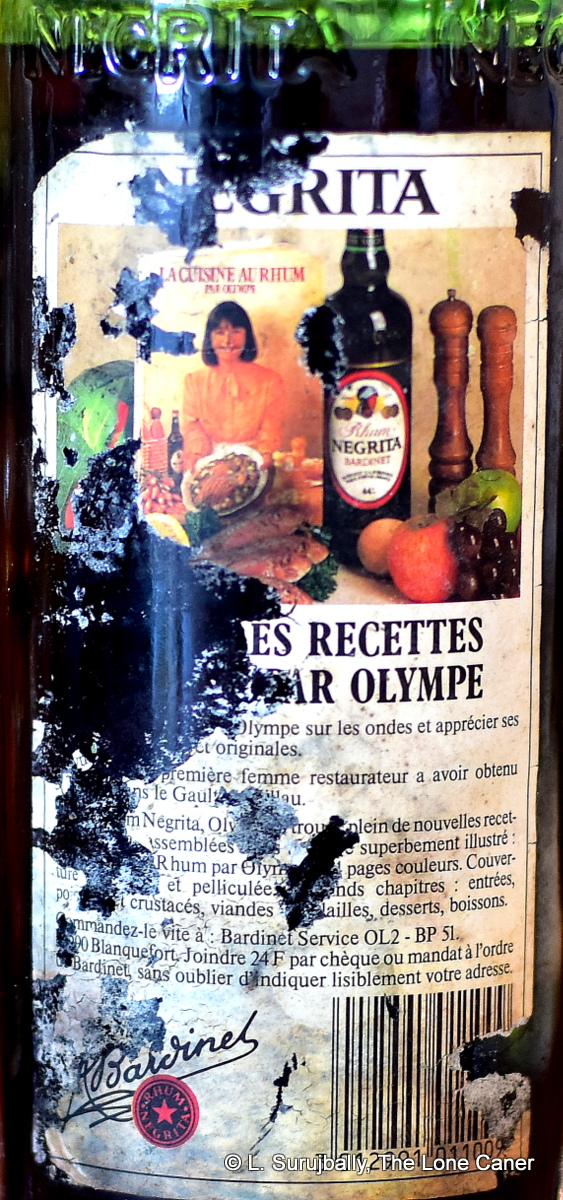 Nose – Doesn’t lend itself to quick identification at all. It’s of course pre-AOC so who knows what made it up, and the blend is not disclosed, alas. So, it’s thick, fruity and has that taste of a dry dark-red wine. Some fruits – raisins and prunes and blackberries – brown sugar, molasses, caramel, and a sort of sly, subtle reek of gaminess winds its way around the back end. Which is intriguing but not entirely supportive of the other aspects of the smell.
Nose – Doesn’t lend itself to quick identification at all. It’s of course pre-AOC so who knows what made it up, and the blend is not disclosed, alas. So, it’s thick, fruity and has that taste of a dry dark-red wine. Some fruits – raisins and prunes and blackberries – brown sugar, molasses, caramel, and a sort of sly, subtle reek of gaminess winds its way around the back end. Which is intriguing but not entirely supportive of the other aspects of the smell.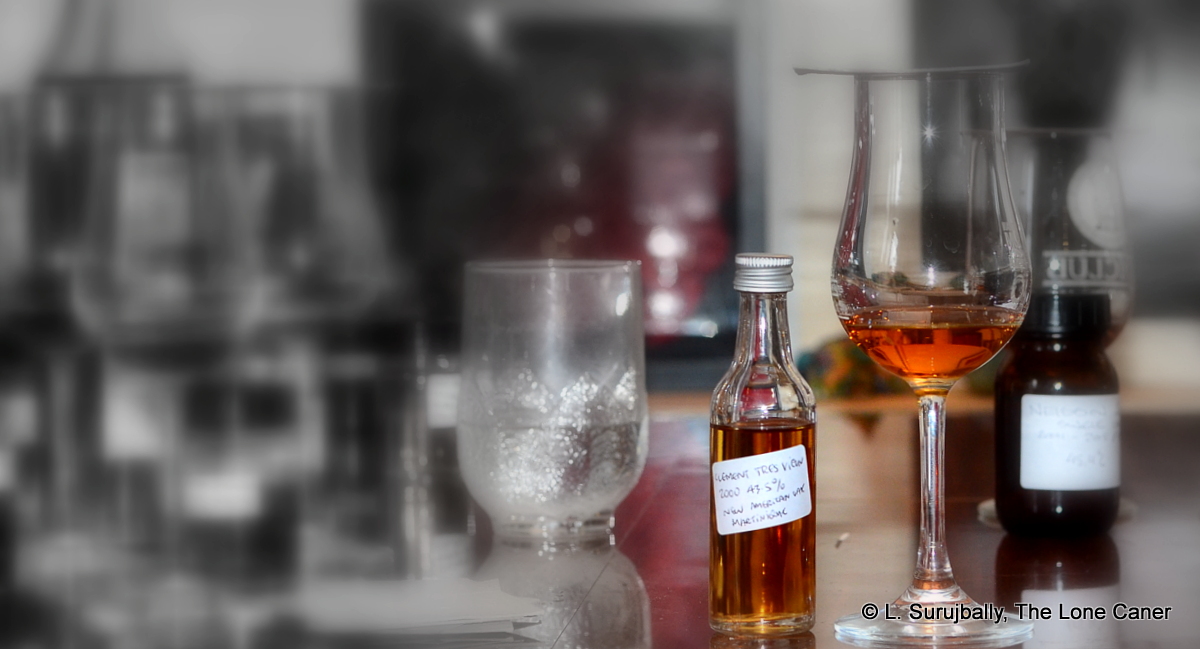
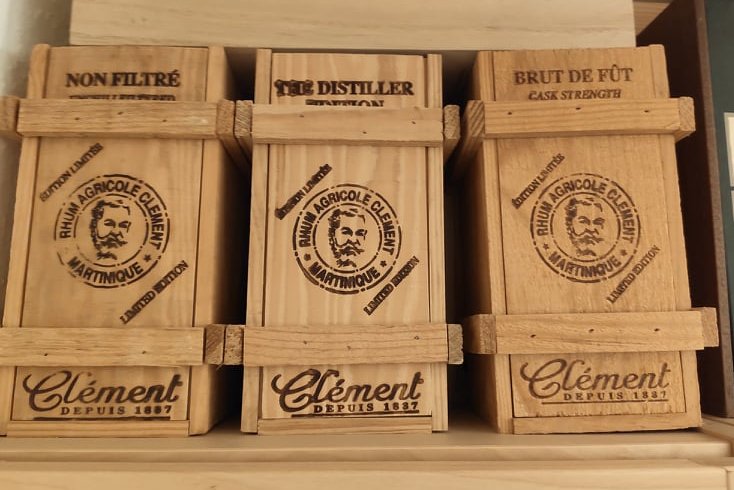
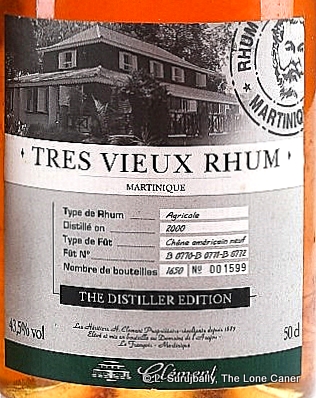 The palate was about par for the course for a rum bottled at this strength. Initially it felt like it was weak and not enough was going on (as if the profile should have emerged on some kind of schedule), but it was just a slow starter: it gets going with citrus, vanilla, flowers, a lemon meringue pie, plums and blackberry jam. This faded out and is replaced by sugar cane sap, swank and the grassy vegetal notes mixed up with ashes (!!) and burnt sugar. Out of curiosity I added some water , and was rewarded with citrus, lemon-ginger tea, the tartness of ripe gooseberries, pimentos and spanish olives. It took concentration and time to tease them out, but they were, once discerned, quite precise and clear. Still, strong they weren’t (“forceful” would not be an adjective used to describe it) and as expected the finish was easygoing, a bit crisp, with light fruit, fleshy and sweet and juicy, quite ripe, not so much citrus this time. The grassy and herbal notes are very much absent by this stage, replaced by a woody and spicy backnote, medium long and warm
The palate was about par for the course for a rum bottled at this strength. Initially it felt like it was weak and not enough was going on (as if the profile should have emerged on some kind of schedule), but it was just a slow starter: it gets going with citrus, vanilla, flowers, a lemon meringue pie, plums and blackberry jam. This faded out and is replaced by sugar cane sap, swank and the grassy vegetal notes mixed up with ashes (!!) and burnt sugar. Out of curiosity I added some water , and was rewarded with citrus, lemon-ginger tea, the tartness of ripe gooseberries, pimentos and spanish olives. It took concentration and time to tease them out, but they were, once discerned, quite precise and clear. Still, strong they weren’t (“forceful” would not be an adjective used to describe it) and as expected the finish was easygoing, a bit crisp, with light fruit, fleshy and sweet and juicy, quite ripe, not so much citrus this time. The grassy and herbal notes are very much absent by this stage, replaced by a woody and spicy backnote, medium long and warm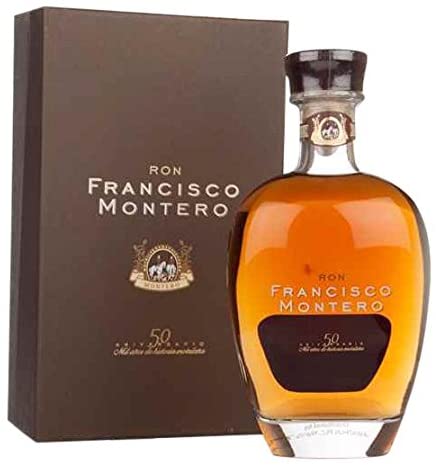

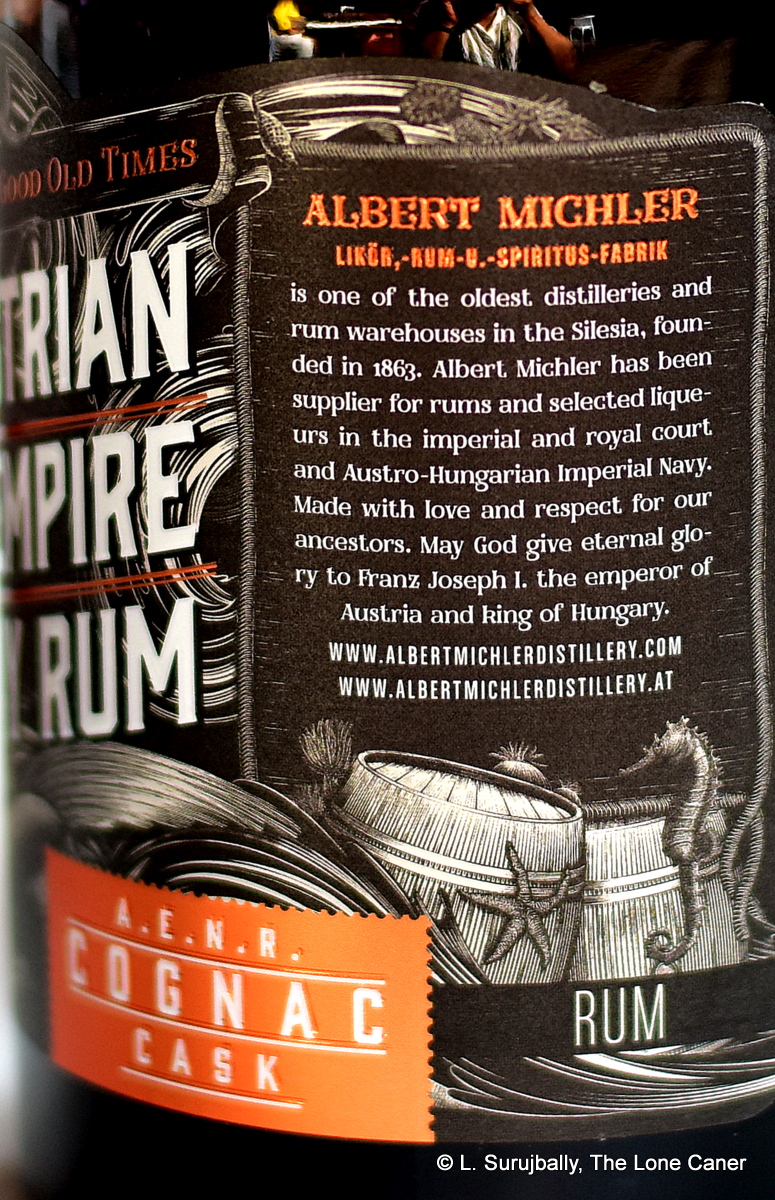 There are no records on whether the Austrian or Austro-Hungarian Navy ever used it or was supplied by the Michler distillery. Somehow I doubt it – it was far more likely it followed in the tradition of rum
There are no records on whether the Austrian or Austro-Hungarian Navy ever used it or was supplied by the Michler distillery. Somehow I doubt it – it was far more likely it followed in the tradition of rum 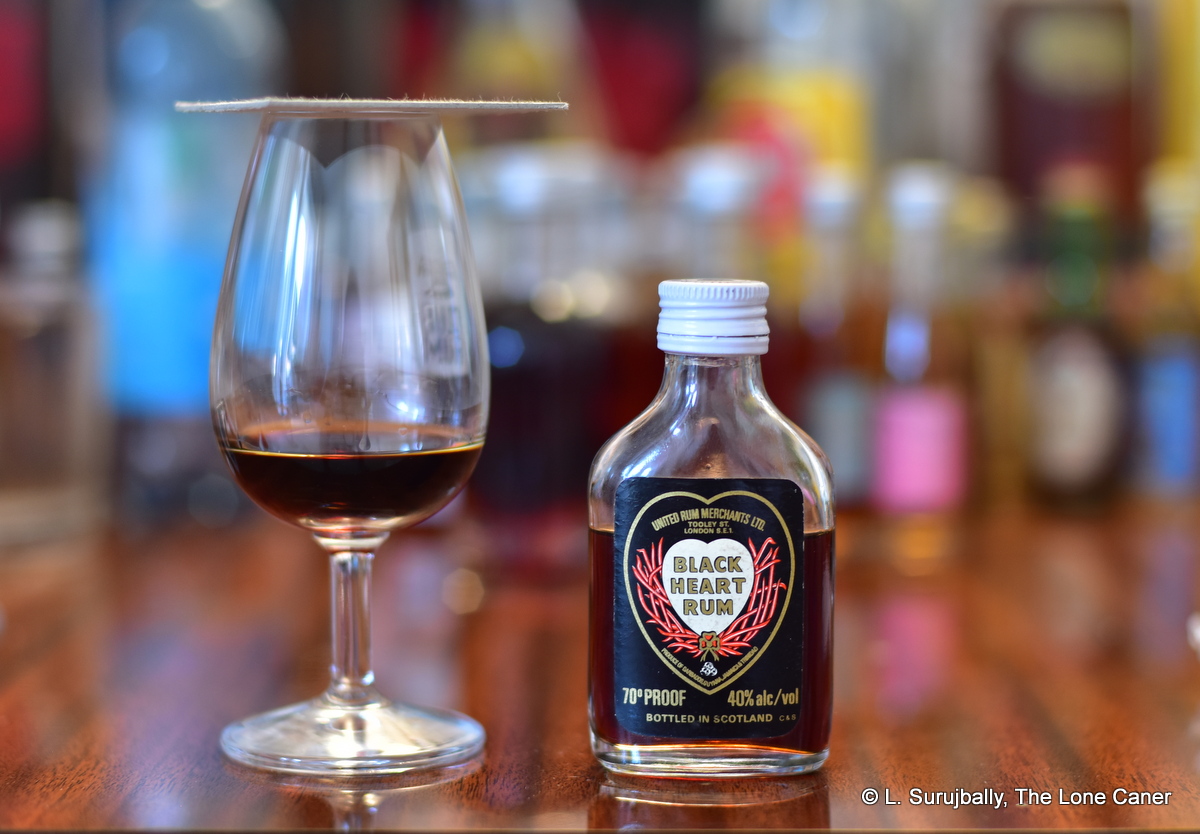
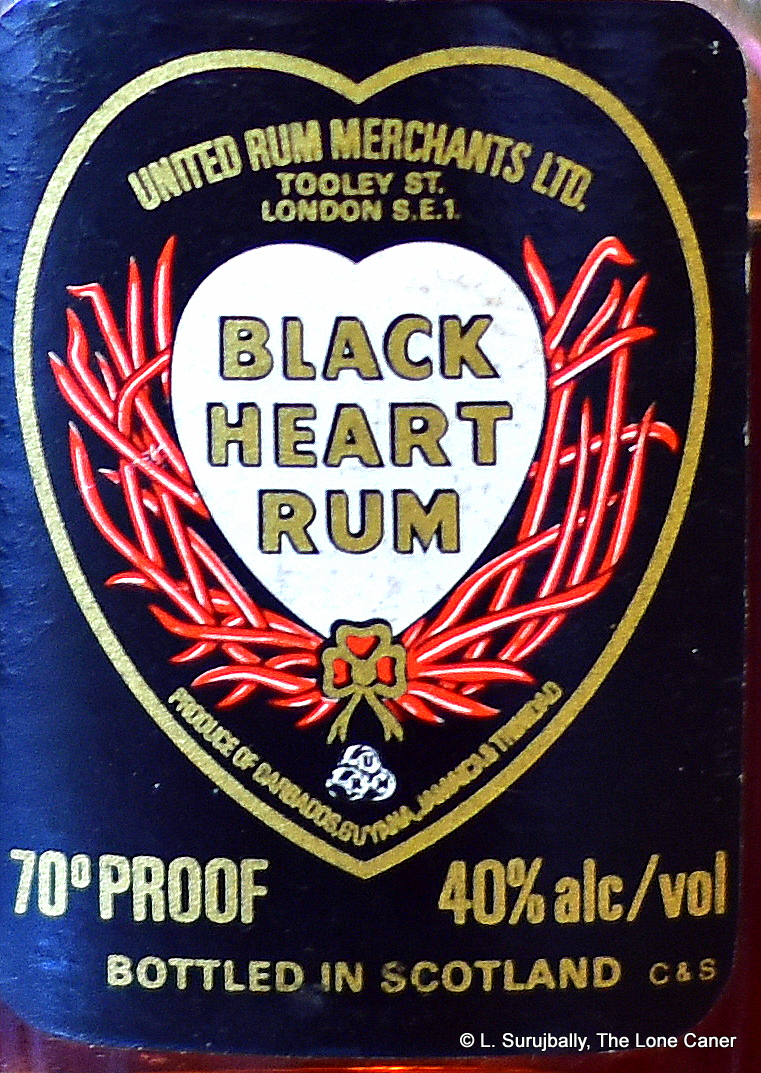 Colour – Very dark brown
Colour – Very dark brown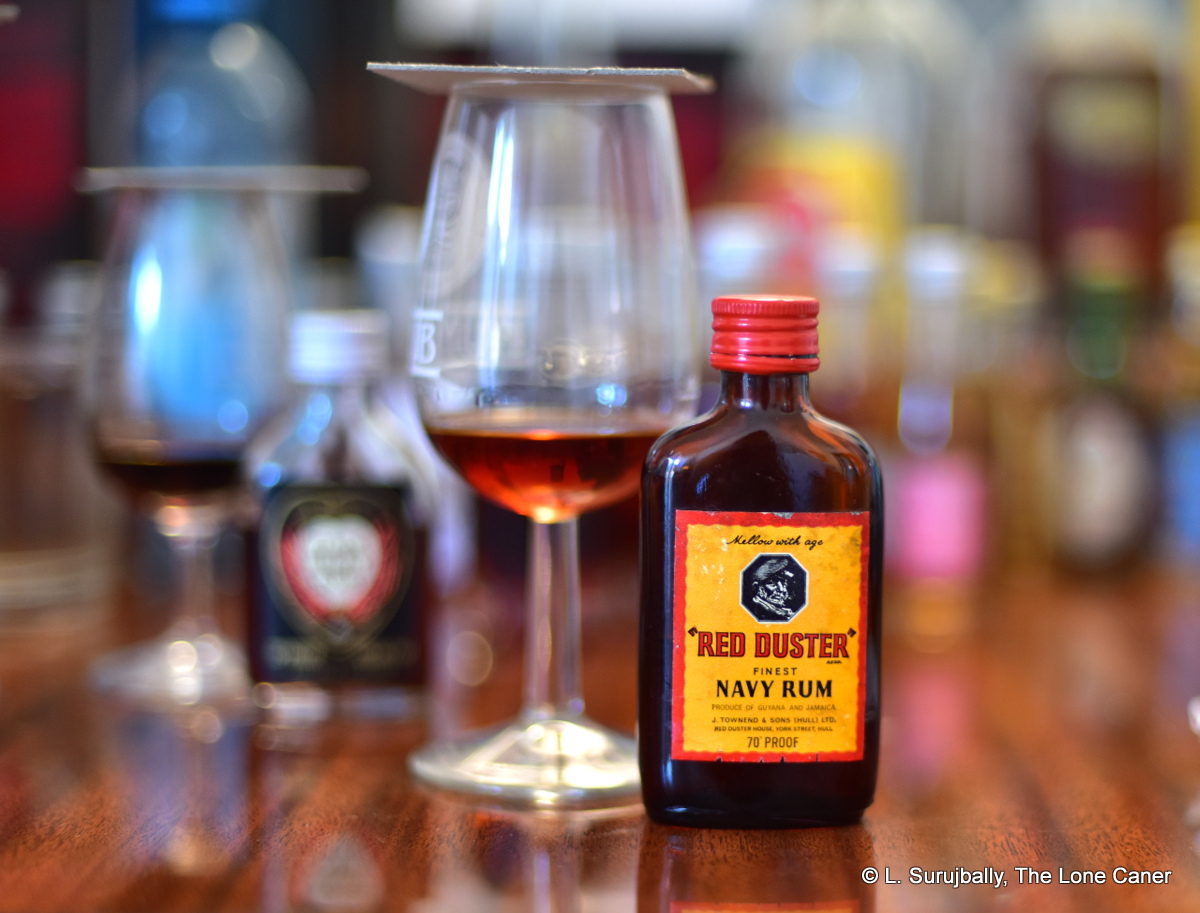
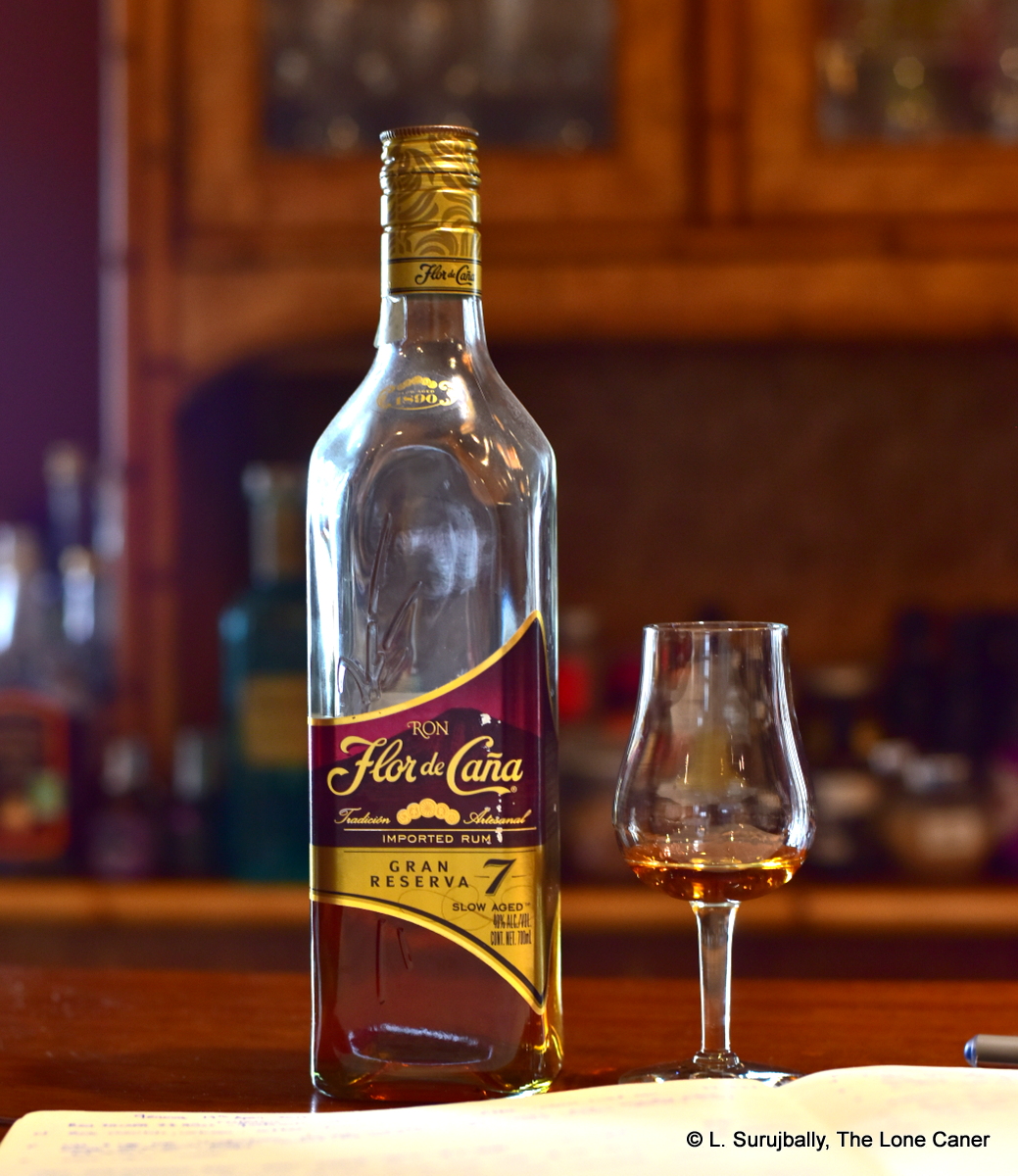
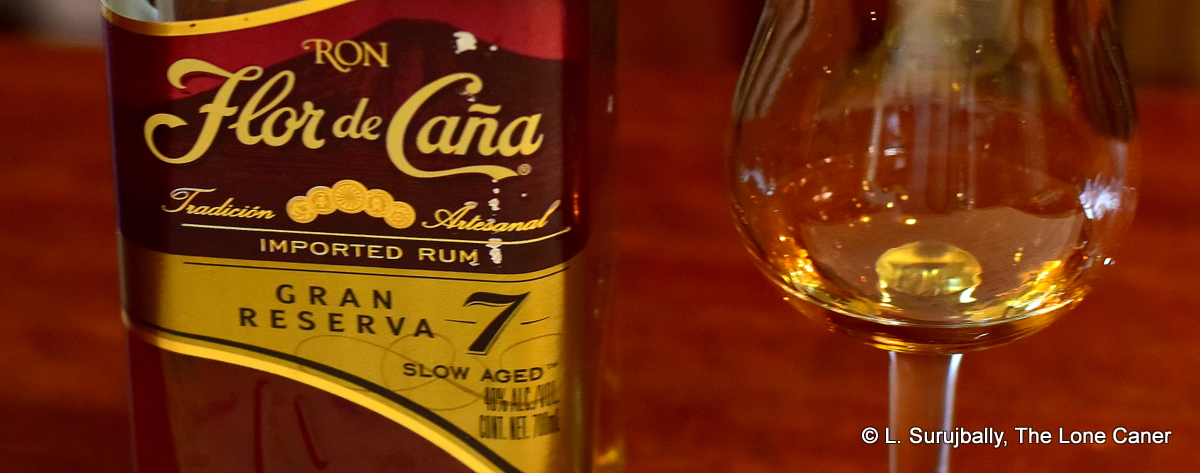
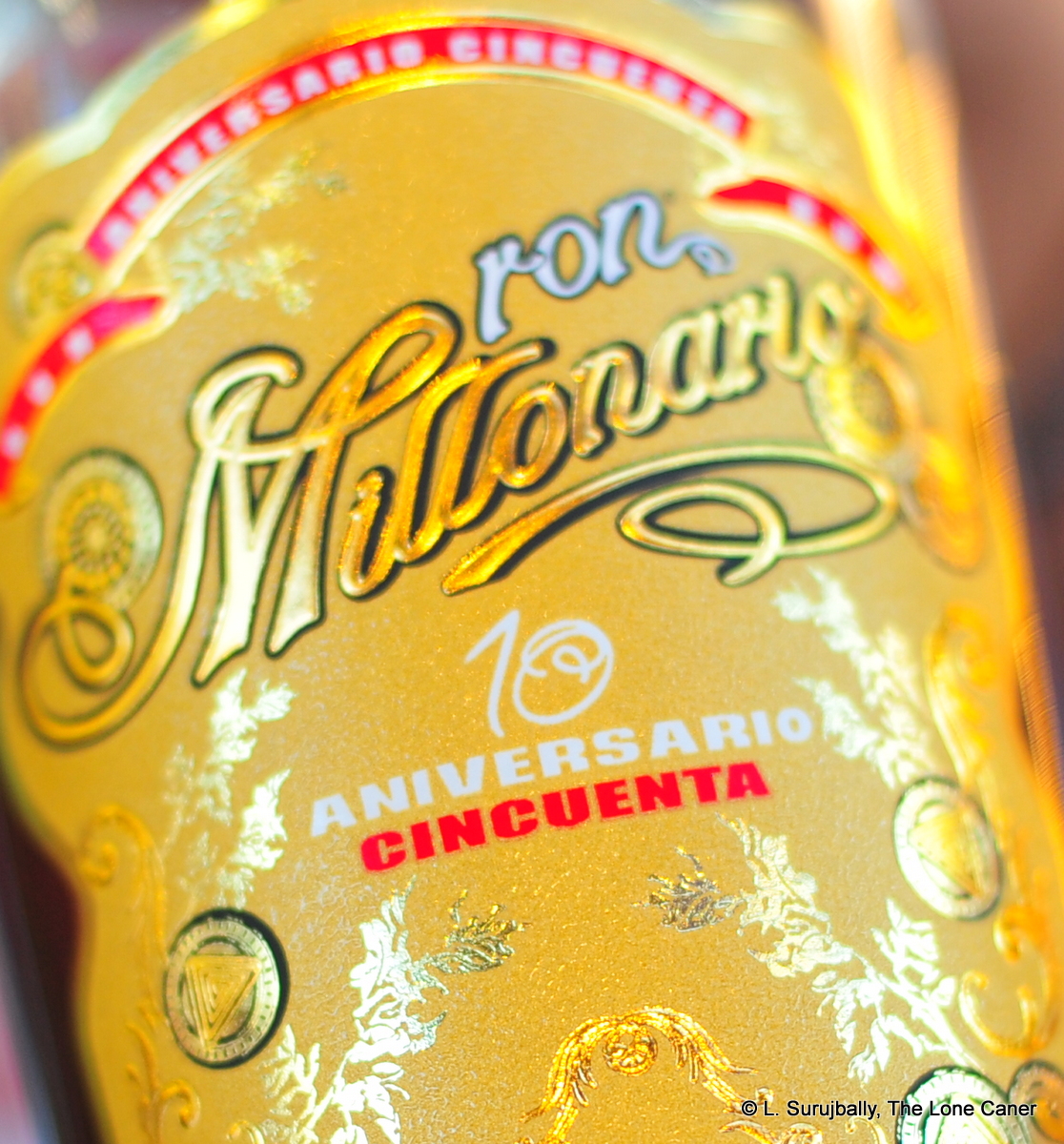
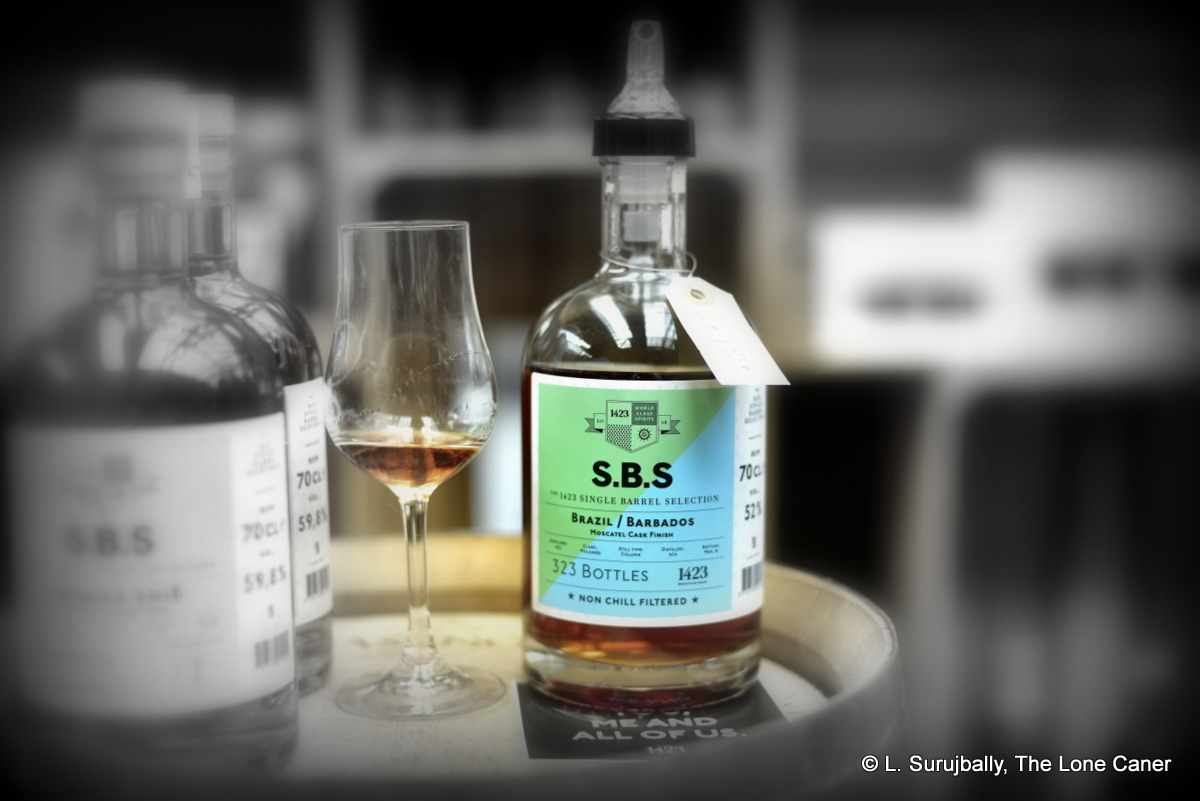
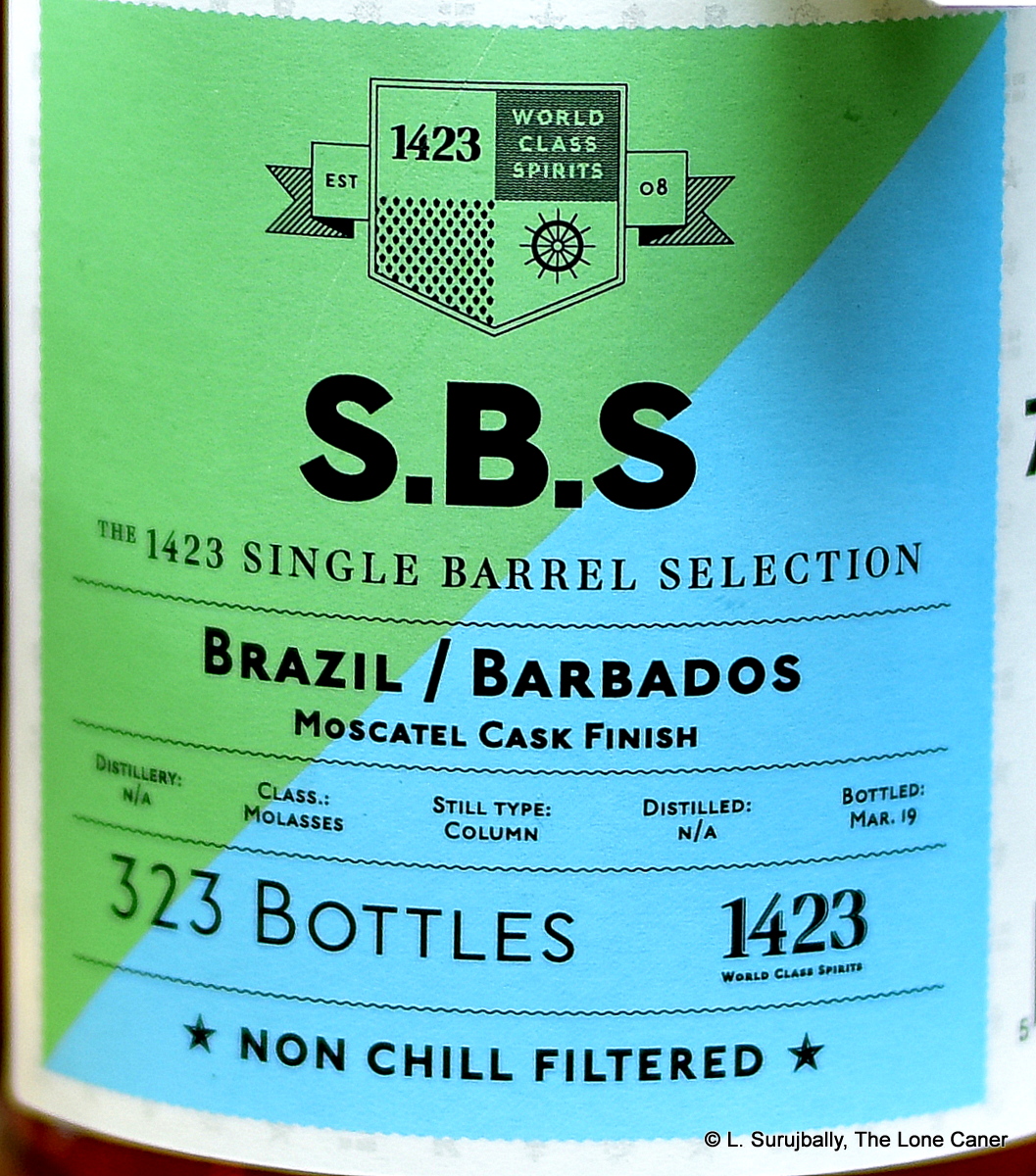 1423, the Danish indie, has taken this concept a step further with their 2019 release of a Brazil / Barbados carnival — it comprised of 8- and 3-year old Foursquare rums (exact proportions unknown, both column still) to which was added an unaged cachaca from Pirassununga (they make the very popular “51” just outside Sao Paolo), and the whole thing left to age for two years in Moscatel wine casks for two years, before being squeezed out into 323 bottles at 52% ABV.
1423, the Danish indie, has taken this concept a step further with their 2019 release of a Brazil / Barbados carnival — it comprised of 8- and 3-year old Foursquare rums (exact proportions unknown, both column still) to which was added an unaged cachaca from Pirassununga (they make the very popular “51” just outside Sao Paolo), and the whole thing left to age for two years in Moscatel wine casks for two years, before being squeezed out into 323 bottles at 52% ABV.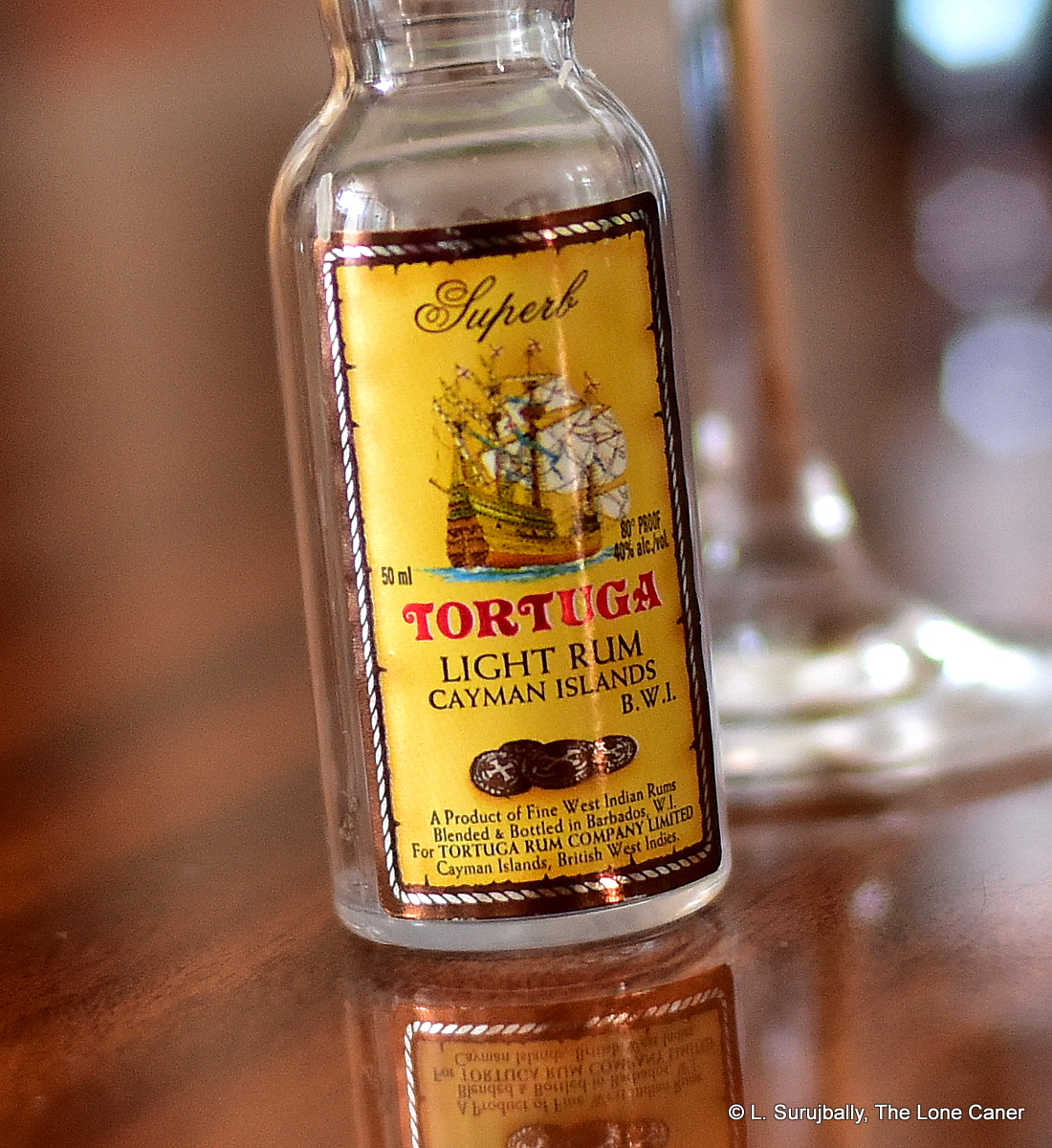
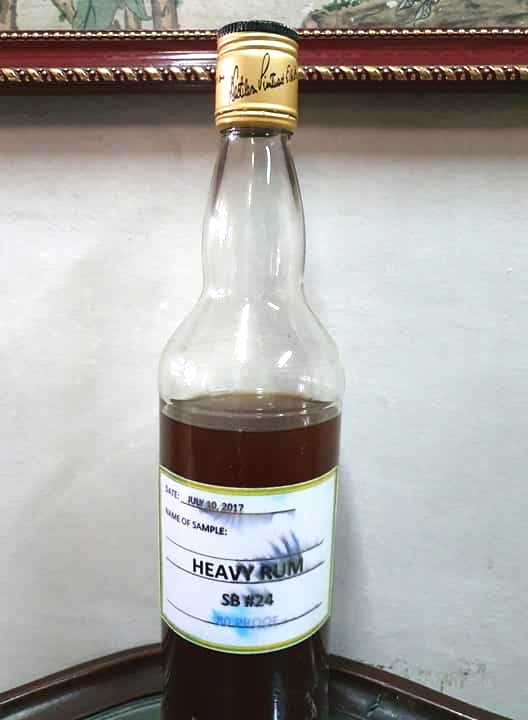 I should begin by warning you that this rum is sold on a very limited basis, pretty much always to favoured bars in the Philippines, and then not even by the barrel, but by the bottle from that barrel – sort of a way to say “Hey look, we can make some cool sh*t too! Wanna buy some of the other stuff we make?”. Export is clearly not on the cards…at least, not yet.
I should begin by warning you that this rum is sold on a very limited basis, pretty much always to favoured bars in the Philippines, and then not even by the barrel, but by the bottle from that barrel – sort of a way to say “Hey look, we can make some cool sh*t too! Wanna buy some of the other stuff we make?”. Export is clearly not on the cards…at least, not yet.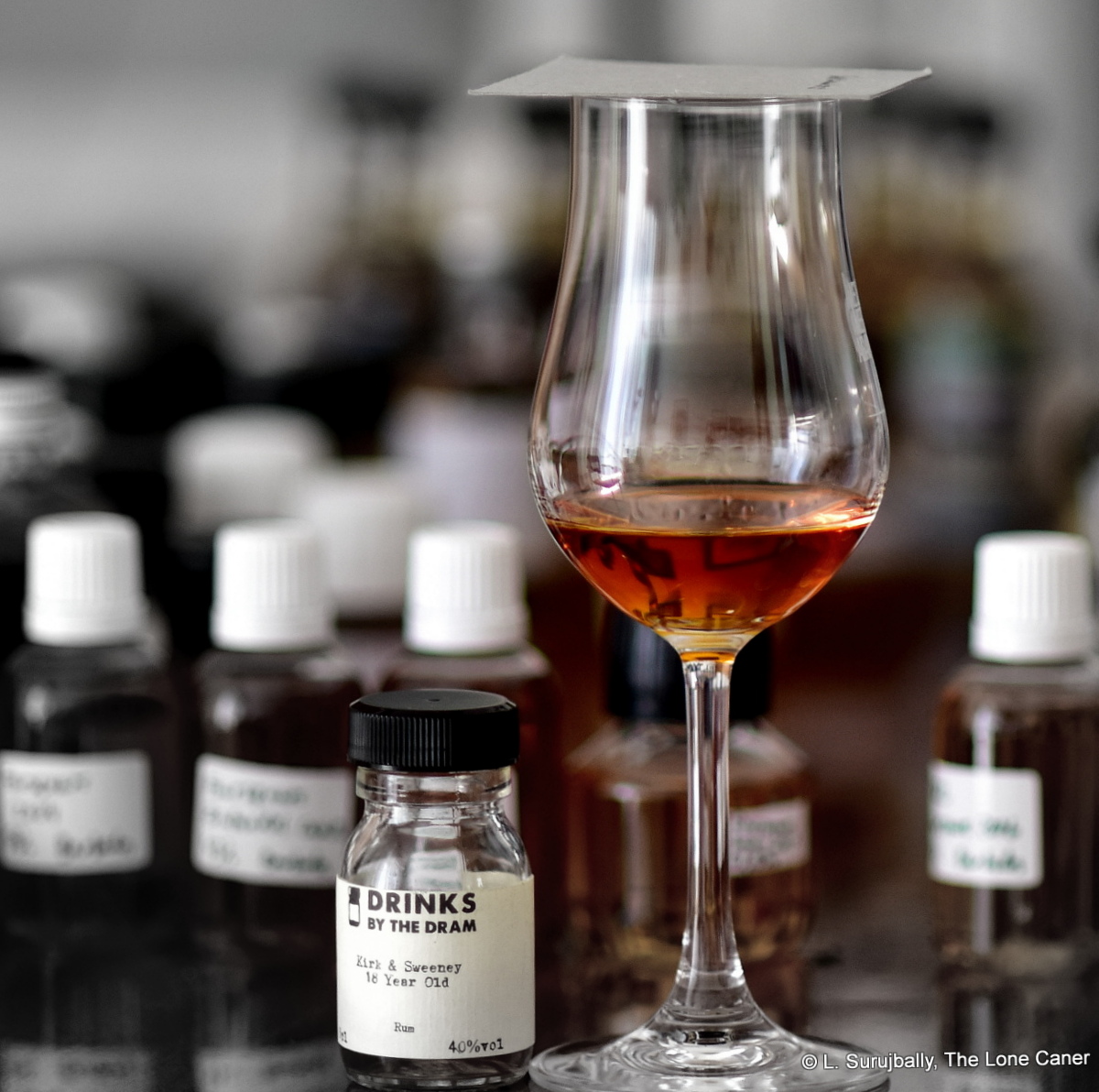
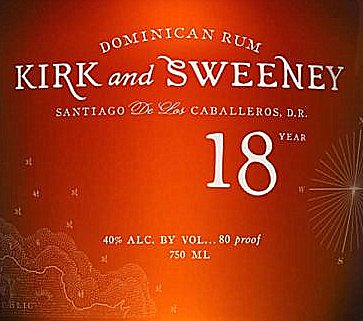 This is not to say that there isn’t some interesting stuff to be found. Take the nose, for example. It smells of salted caramel, vanilla ice cream, brown sugar, a bit of molasses, and is warm, quite light, with maybe a dash of mint and basil thrown in. But taken together, what it has is the smell of a milk shake, and there doesn’t seem to be much in the way of startling originality – not exactly what 18 years of ageing would give you, pleasant as it is. It’s soft and easy, that’s all. No thinking required.
This is not to say that there isn’t some interesting stuff to be found. Take the nose, for example. It smells of salted caramel, vanilla ice cream, brown sugar, a bit of molasses, and is warm, quite light, with maybe a dash of mint and basil thrown in. But taken together, what it has is the smell of a milk shake, and there doesn’t seem to be much in the way of startling originality – not exactly what 18 years of ageing would give you, pleasant as it is. It’s soft and easy, that’s all. No thinking required.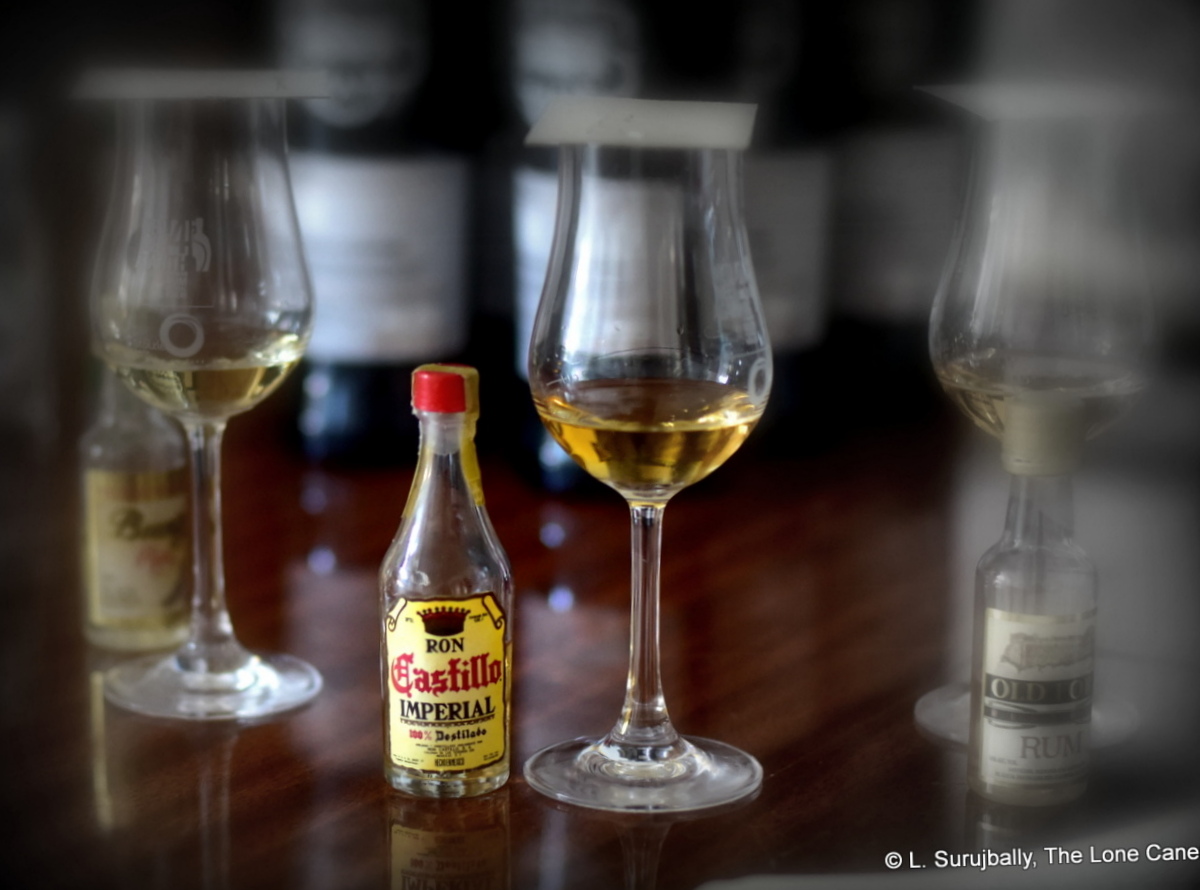
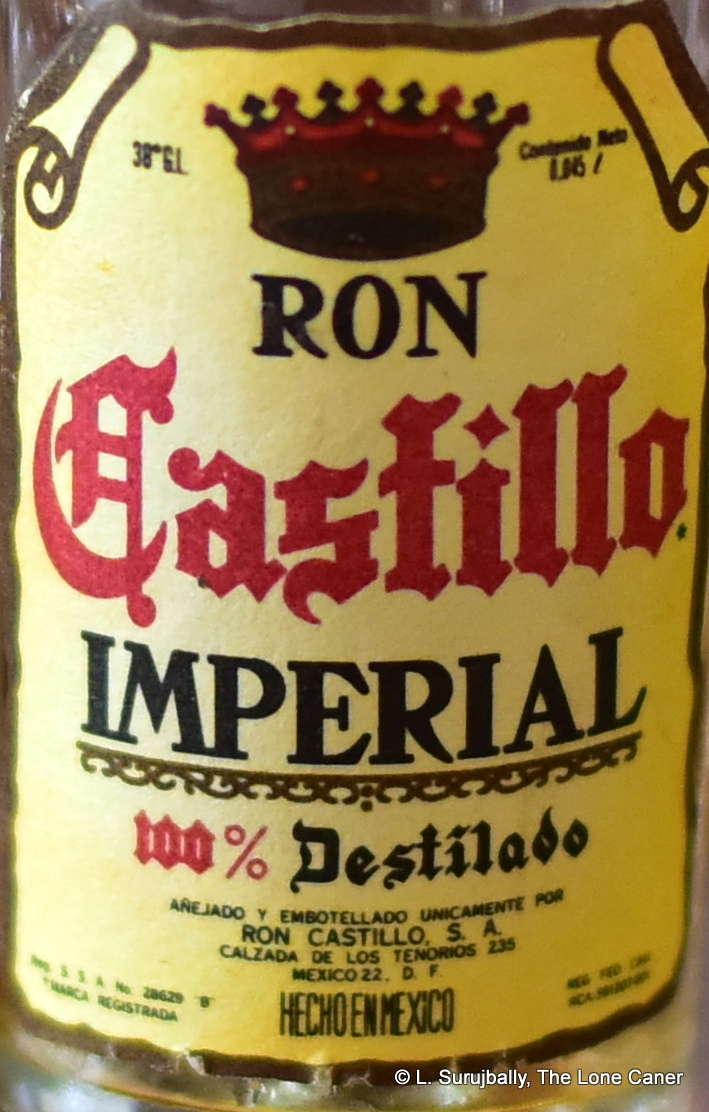 Colour – Light Gold
Colour – Light Gold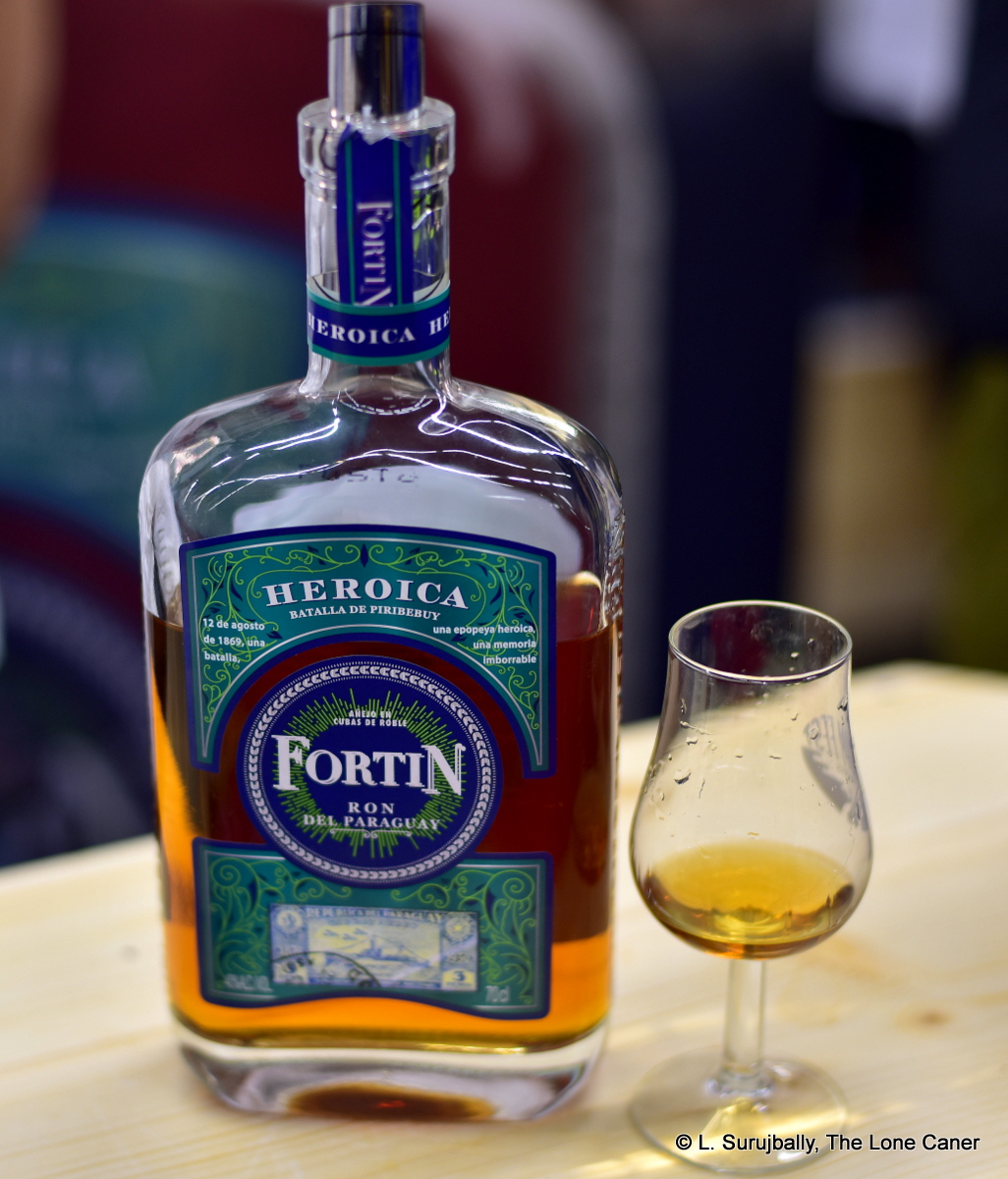
 Here’s what we know – made from rendered sugar cane juice (“honey”), fermented for 72 hours using wild yeast, column distilled, then aged in all kinds of barrels – American oak (ex-bourbon), cognac, Pedro Ximenez and also Marcuya “fruit of passion” wood from Paraguay. Once that’s done, the resultant rons are blended to form the final product. The age is currently unknown — I’ll update this paragraph if I get feedback from their marketing folks — but I’ll hazard a guess it’s medium…about 3-6 years. Little of this, by the way, is noted on the label, which only says it is a Paraguayan rum, commemorates the 1869 battle, is aged in oak vats and 40%. Wonderful. Clearly the word “disclosure” gets more lip service than real purchase over there.
Here’s what we know – made from rendered sugar cane juice (“honey”), fermented for 72 hours using wild yeast, column distilled, then aged in all kinds of barrels – American oak (ex-bourbon), cognac, Pedro Ximenez and also Marcuya “fruit of passion” wood from Paraguay. Once that’s done, the resultant rons are blended to form the final product. The age is currently unknown — I’ll update this paragraph if I get feedback from their marketing folks — but I’ll hazard a guess it’s medium…about 3-6 years. Little of this, by the way, is noted on the label, which only says it is a Paraguayan rum, commemorates the 1869 battle, is aged in oak vats and 40%. Wonderful. Clearly the word “disclosure” gets more lip service than real purchase over there.

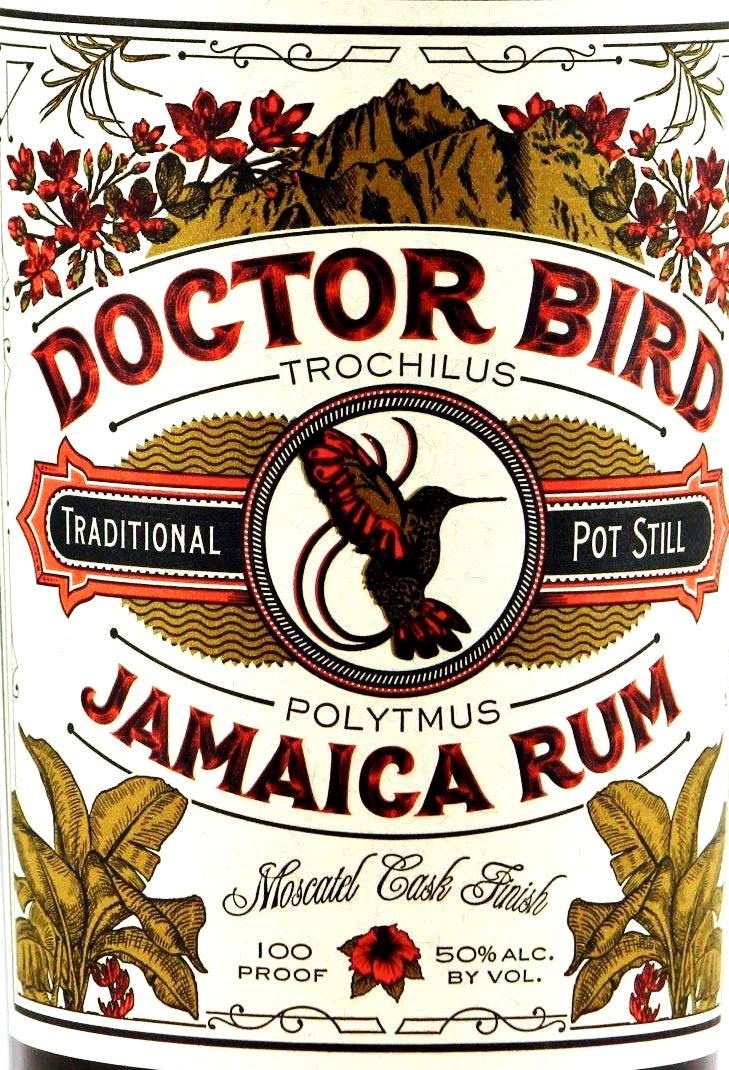 The strangely named Doctor Bird rum is another company’s response to
The strangely named Doctor Bird rum is another company’s response to 
 Palate – Even if they didn’t say so on the label, I’d say this is almost completely Guyanese just because of the way all the standard wooden-still tastes are so forcefully put on show – if there
Palate – Even if they didn’t say so on the label, I’d say this is almost completely Guyanese just because of the way all the standard wooden-still tastes are so forcefully put on show – if there